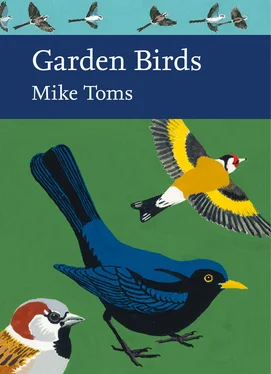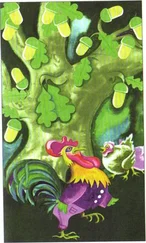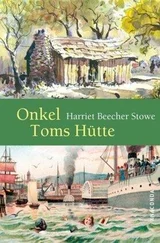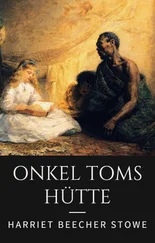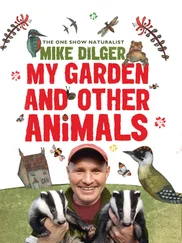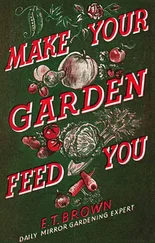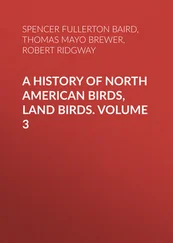
FIG 30. Coal Tits make greater use of garden feeding stations in those winters when the Sitka Spruce seed crop is poor. Data reproduced from BTO Garden BirdWatch with permission.
There is also evidence of a movement into (largely) rural gardens during the late winter period, with farmland buntings and finches showing their annual peak in garden use at this time according to data from BTO Garden BirdWatch (see Figure 31). The late winter period is known to be a difficult time for seed-eating birds using farmland habitats, the loss of overwinter stubbles leaving a ‘hungry gap’ in food availability (Siriwardena et al., 2008), something that may prompt the birds to aggregate in patches of habitat where seeds can still be found (Gillings et al., 2008) or to move out of farmland and into other habitats (Gillings & Beaven, 2004). Examination of data from the Winter Farmland Bird Survey (Gillings & Beaven, 2004), alongside that from BTO Garden BirdWatch for the same weeks, is suggestive of a movement out of farmland and into gardens for Goldfinch and potentially other species ( Figure 32). Further supporting evidence comes from the long-running Garden Bird Feeding Survey. This shows an increase in the use of gardens by Reed Bunting and Yellowhammer during the period of greatest agricultural intensification (Chamberlain et al., 2003; 2005); although not supported by formal statistical tests, it could reflect increased use of garden foods because of a decline in seed availability within wider farming landscapes.

FIG 31. The use of garden feeding stations by Yellowhammers peaks during the second half of the winter, a period during which farmland seed supplies are at their lowest. Data reproduced from BTO Garden BirdWatch with permission.
Work carried out in France supports the value of rural gardens for farmland birds during the winter months. Using data from the French Garden Birdwatch scheme, Pierret & Jiguet (2018) looked at garden use by farmland bird species along a gradient denoting agricultural intensification. Garden feeders located within intensively cultivated landscapes were found to attract more birds, with this relationship strongest for truly farmland species. The pattern became more pronounced as the winter progressed, suggesting that as farmland seed supplies become depleted, so farmland birds increasingly turn to gardens.
One scarce farmland bird for which a number of rural gardens may be of particular importance within the UK is the Cirl Bunting Emberiza cirlus, whose small Devonshire population makes regular use of garden feeding stations in the south of the county during the winter months. Of course, to fully understand the role that gardens play in the ecology of bird communities breeding within farmland, we need to be able to track their individual movements, something that is becoming increasingly possible through the use of emerging technologies, such as PIT tags. The pull of garden feeding stations has wider implications for those involved in survey work, particularly during the winter months. Ask any volunteer who has participated in bird atlasing during the winter months, and found themselves in an area of open country, and they will tell you how it is the rural gardens and their feeding stations that are the place to look for small birds. This effect has been studied experimentally through work carried out in Maine, US, where researchers were testing a bird survey technique widely used in the breeding season and involving an observer making a series of stops along a linear and driven route. At each stop the observer would carry out a ‘point count’ noting the bird species recorded during a fixed time interval before moving on to the next stop. By examining the densities of birds recorded at stops with and without a feeding station, the researchers found that for five species densities were higher at stops with feeding stations. As well as this, presence of the food appeared to influence the birds’ habitat selection, pulling them into edge habitats.

FIG 32. Data from two BTO surveys suggest a movement into gardens by Goldfinches as the winter progresses, something that could be studied in greater detail through the use of ringing or tagging technologies. Data reproduced from BTO with permission.
IS THE PROVISION OF SUPPLEMENTARY FOOD FOR WILD BIRDS A GOOD THING?
Little work has been done to examine differences in the potential costs or benefits of different types of food – at its simplest, high-quality or low-quality foods. We are not yet in a position to be able to determine whether it is better to encourage people to feed wild birds, regardless of the type of food that they provide, because it fosters a sense of connection with the natural world, or discourage the provision of feeding altogether if we cannot provide foods that are entirely suitable for the species that we are trying to help. We provide supplementary food and garden for wildlife more generally because we see these activities as being beneficial for wildlife. However, while these resource subsidies and habitat modifications may provide opportunities for birds and other wildlife within our increasingly urbanised landscapes, they may also fundamentally alter ecological processes and community structure (Shochat, 2004). Understanding these potential impacts requires new research.
Later in this chapter we will look in more detail at some of the costs and benefits for birds of feeding on food provided at garden feeding stations (or experimentally in other habitats). One study, however, is worth mentioning here since it nicely summarises some of these costs and benefits. The study in question was carried out over three years and examined how bird feeding impacts bird health – something that involved looking at body condition, stress, antioxidant levels, nutritional condition, immune function and levels of disease – for wild bird communities in two forested sites, one where food was provisioned and one where it wasn’t (Wilcoxen et al., 2015). Wilcoxen’s study revealed some clear and beneficial effects; birds at the fed site had significantly larger fat stores, greater antioxidant capacity and reduced stress. In addition, fed birds also showed better body condition and better nutritional condition, though not in every year. However, fed birds were more likely to be suffering from disease. Ten months after the feeding experiment had ended, the researchers repeated the sampling carried out at the two sites; this time the differences had gone, adding further supporting evidence that the differences had been due to the provision of food. Feeding does, it seems, deliver some health benefits, but these come with a certain level of cost.
DOES PROVIDING FOOD ENCOURAGE DEPENDENCY?
One of the most common criticisms of the practice of providing food for wild birds is that it causes dependency, prompting questions as to what happens to birds if feeding stops, and are individuals that use feeders regularly able to then recognise natural foods or have the skills needed to exploit them? Little work has been done on the question of dependency, in part a reflection of the often quoted work done by Brittingham & Temple (1992b) – see below – and in part a reflection of knowledge gained on how small birds track different feeding opportunities.
Читать дальше
